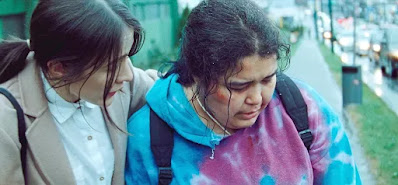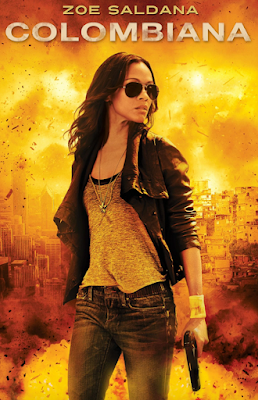Earlier this year, mubi featured a spotlight on the films of Aleksey Balabanov. I first encountered a film by Aleksey Balabanov back in 2009 with the release of Cargo 200. I saw the film without knowing anything about the topic let alone the meaning of the title but the film proved to be a jolting experience.
 |
| Cargo 200 |
The title Cargo 200 refers to the coffins in which dead Soviet soldiers from Afghanistan were sent. Cargo 200 stayed with me because it was the first film that I had seen that showed the death toll from the Soviet perspective. Until that time, I had only seen American films about Afghanistan and what was missing from the cinematic landscape was the perspective of the Soviet soldiers and their families. Balabanov’s film filled a missing gap but I didn’t get to see any of his other films until this recent mubi spotlight.
Brother (1997, Russia)
Brother emits a similar raw gritty energy to that of Nicolas Winding Refn’s Pusher trilogy while making terrific usage of location. Interestingly, the first Pusher film came out in 1996 just one year before Brother. That comparison to N.W. Refn is only on the surface because as it turns out, Brother’s shooting technique has rules which share some intentions with that of Dogme 95:
In Brother, Danila (Sergey Bodrov) is a newly discharged ex-soldier who is back from the first Chechen war and immediately finds trouble in his village. With no clear job perspective, Danila heads off to St. Petersburg to look for his brother Viktor (Viktor Sukhorukov). As it turns out, Viktor is seeped deep in crime and that works nicely for Danila who is able to put his cold blooded killing to good use. And whatever money Danila gets, he spends on music cassettes (yes, those good old walkman tapes).
After slaying all the dragons in St. Petersburg, it is only natural for Danila to move to a bigger city for a larger crime net. That opportunity comes courtesy of Brother 2 in 2000 when the brothers find themselves in Moscow. In the sequel, Danila also makes his way to Chicago.
The two Brother films nicely establish Aleksey Balabanov’s raw style and show that he isn’t afraid to depict sensitive topics like racism and ethnic conflict. Also, the scenes of the local market in Brother are refreshing and show the importance of using location in film. There are some market shots that made me think of Sergei Loznitsa’s cinema.
Considering that Sergey Bodrov’s character Danila returned from the first Chechen war, it isn’t surprising that Balabanov’s follow-up to Brother 2 is War (2002) set against the backdrop of Chechnya. These films are part of Balabanov's crime/violent movies but early in his career, he tackled Kafka with 1994’s Zamok, based on Kakfa’s The Castle.
In recent years, I have associated Russian cinema set in Caucasus with that of Kantemir Balagov (Closeness) but Aleksey Balabanov was there first.



















